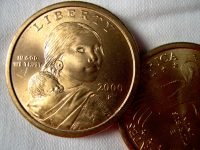Medicinal plants have been used to prevent and treat various health problems. Several African and Asian nations are now encouraging traditional medicines as an internal component of their public healthcare programmes. Indigenous medicines are relatively inexpensive and locally available and readily accepted by local population. Ethiopia has an enormous resource of plant species that are used in traditional medicine. Among the 7,000 higher plant species that are known to exist, about 800 of them are employed in the traditional healthcare and 60% of pants are said to be indigenous with their healing potential. Majority of Ethiopians depend on medicinal plants as their only source of healthcare. Vast knowledge on the traditional uses of these plants is not fully documented and most of the knowledge is conveyed from one generation to the text generation through words of mouth. The survey conducted during February-May 2006 was undertaken to explore the traditional systems of medicine in Asendabo region of Ethiopia.
How to Spot a Fraudulent Spell Caster

Updated October 4, 2022: Leonard Elmira shares new social media tactics, and Efe West gives some guidance on the difference between regressive and vampiric traditionalists and those who respect tradition but have good intentions and actually helpful practices. I get many of the same questions and complaints from patrons and…





